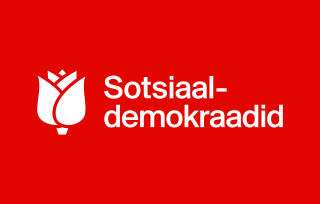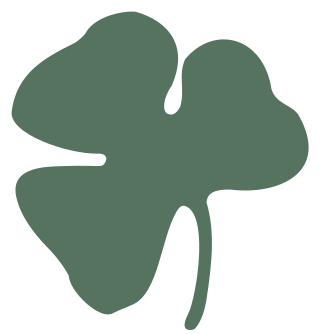 |
|---|
The Estonian Democratic Party (Estonian : Eesti Demokraatlik Erakond, EDE) was a political party in Estonia.
 |
|---|
The Estonian Democratic Party (Estonian : Eesti Demokraatlik Erakond, EDE) was a political party in Estonia.
The party had its roots in the Estonian national movement towards the end of the 19th century. It was formally founded by Jaan Tõnisson in the city of Tartu in 1905 as the Progressive National Democratic Party (Eesti Rahvameelne Eduerakond). [1] Tönisson represented the party in the Russian Duma, where the party was affiliated with the Constitutional Democratic Party. [1]
In 1917 the party was renamed the "Democratic Party". It won seven seats in the Provincial Assembly elections in the same year, and became part of the Democratic Bloc in the Assembly alongside the Estonian Radical Democratic Party and the Rural League. [2] The three contested the 1918 elections as the Democratic Bloc, receiving around 23% of the vote.
In March 1919 the party merged with the Radical Democratic Party to form the Estonian People's Party, [1] with the new party going on to win 25 of the 120 seats in the Constituent Assembly elections in April. Some party members unhappy with the merger left to help form the Christian Democratic Party. [3]

Otto August Strandman was an Estonian politician, who served as Prime Minister (1919) and State Elder of Estonia (1929–1931).

The Social Democratic Party is a centre-left political party in Estonia. It is currently led by Lauri Läänemets. The party was formerly known as the Moderate People's Party. The SDE has been a member of the Party of European Socialists since 16 May 2003 and was a member of the Socialist International from November 1990 to 2017. It is orientated towards the principles of social-democracy, and it supports Estonia's membership in the European Union. From April 2023, the party has been a junior coalition partner in the third Kallas government.
This article gives an overview of liberalism and centrism in Estonia. It is limited to liberal and centrist parties with substantial support, mainly proved by having had a representation in parliament. The sign ⇒ denotes another party in that scheme. For inclusion in this scheme it is not necessary that the party has labeled itself as a liberal party.

Konstantin Päts was an Estonian statesman and the country's president from 1938 to 1940. Päts was one of the most influential politicians of the independent democratic Republic of Estonia, and during the two decades prior to World War II he also served five times as the country's State Elder. He carried out a self-coup on 12 March 1934. After the 16–17 June 1940 Soviet invasion and occupation of Estonia, Päts remained formally in office for over a month, until he was forced to resign, imprisoned by the new Stalinist regime, and deported to the USSR, where he died in 1956.

Jaan Tõnisson was an Estonian statesman, serving as the Prime Minister of Estonia twice during 1919 to 1920, as State Elder from 1927 to 1928 and in 1933, and as Foreign Minister of Estonia from 1931 to 1932.
The Democratic Party is a centre-right political party in Bulgaria led by Alexander Pramatarski. The party was a member of the European People's Party (EPP).
The Estonian Social Democratic Workers' Party was a political party in Estonia between 1917 and 1925. The leaders of the party, founded on platforms of patriotism, Estonian independence, and social justice, made a major contribution to the drafting of the first (1920) Constitution of Estonia.
The Estonian Liberal Democratic Party, abbreviated to ELDP, was a social liberal political party in Estonia that existed between 1990 and 1994. The ELDP was founded on 9 March 1990, during the Estonian Soviet Socialist Republic, by the merger of the Liberal People's Party and the Free Democratic Party.
The Estonian Labour Party was a political party in Estonia. It was formed in 1919 by a merger of the Radical Socialist Party and the Social Travaillist Party, and ceased to exist in 1932, when it merged with other centrist parties to form the National Centre Party. It was a member of government coalitions between 1919 and 1925, and again from 1927 until 1931.
The Estonian Radical Socialist Party was a political party in Estonia.
The Estonian People's Party was a centre-right political party in Estonia.

The Farmers' Assemblies was a conservative political party in Estonia. Led by Konstantin Päts, it was one of the ruling parties during most of the interwar period.
The Estonian Independent Socialist Workers' Party was a political party in Estonia.
The Christian People's Party was a political party in Estonia between 1919 and 1931.
The Settlers' Party was a political party in Estonia.
The Estonian Socialist Workers' Party was a political party in Estonia.
The Estonian Socialist Revolutionary Party was a political party in Estonia during the early 20th century.
The Social Travaillist Party was a political party in Estonia.
The Estonian Radical Democratic Party was a political party in Estonia.
The Democratic Bloc was a political grouping in Estonia.